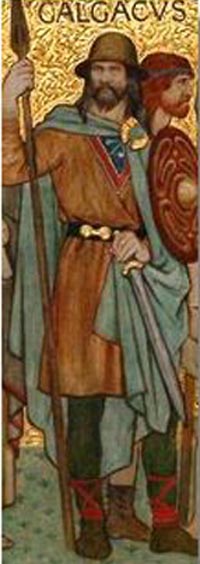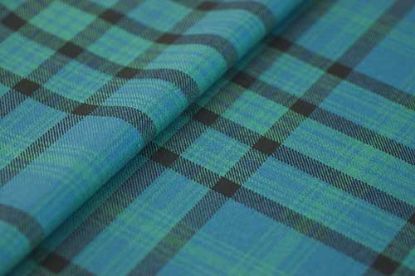The Monarchs of Scotland - Scots Connection.
 |
Calgacus, from the processional frieze of famous Scots, Scottish National Portrait Gallery, Edinburgh, William Hole 1898 |
THE Scottish Nation successfully absorbed several races as it evolved between the sixth and fourteenth centuries. The early Scots were a Celtic people from Ireland who invaded and settled the North West Coast of mainland Britain. Already in place were the indigenous Picts, referred to by the Roman orator Eumenius as early as AD296, and so called because they painted their bodies (Picti in Latin means 'painted people').
However, only from the ninth century is it considered correct to use the word “Scot” when referring to the inhabitants of northern Britain. Before this, the Irish word “Scotti” referred only to descendants of the Celtic Dál Riata from north -east Ireland, who began to occupy the coastline of Argyllshire and western Scotland from the ninth century. Up until then, the territory from Caithness to Fife was inhabited by Pictish tribes, with Southern Scotland occupied by Angles and Britons. Central Scotland, however, was occupied by the Romans from around 84AD, after Gnaeus Julius Agricola had won the Battle of Mons Graupius against the Caledonian leader Calgacus. The ongoing fierceness of the local tribes and the harshness of the climate soon drove the Romans south behind the 37-mile long Antonine Wall which connected the Firths of Forth and Clyde. By 122AD, they had retreated even further to the south behind the better constructed Hadrian's Wall which runs from Wallsend on the River Tyne to the Solway Firth, a strategic fortification which they finally abandoned in the early fifth century.
c.500 Fergus Mor McErc (Fergus, son of Fergus) - WHILE little is known about him, Fergus Mor McErc is widely accepted in medieval texts as the founder of the Scottish nation which emerged around c.500AD. The tradition says that he and his followers arrived from Ireland, and that they brought with them the mystical Lia Fail, the Stone of Destiny upon which he and his successors were subsequently crowned. He was succeeded after his death by his son Dúngal. Thereafter, sources are obscure and contradictory until the arrival of Alpin, although it is believed that Fergus's grandsons were Gabrán mac Domangairt and Comgall, and that a great-grandson was named Aédan mac Gabrán. It is also known that various Pictish Kings died in battle against either Viking invaders or in family feuds – notably Uven Mac Angus, Eogån, and latterly Ōengus II, brother of Caustantin.
























